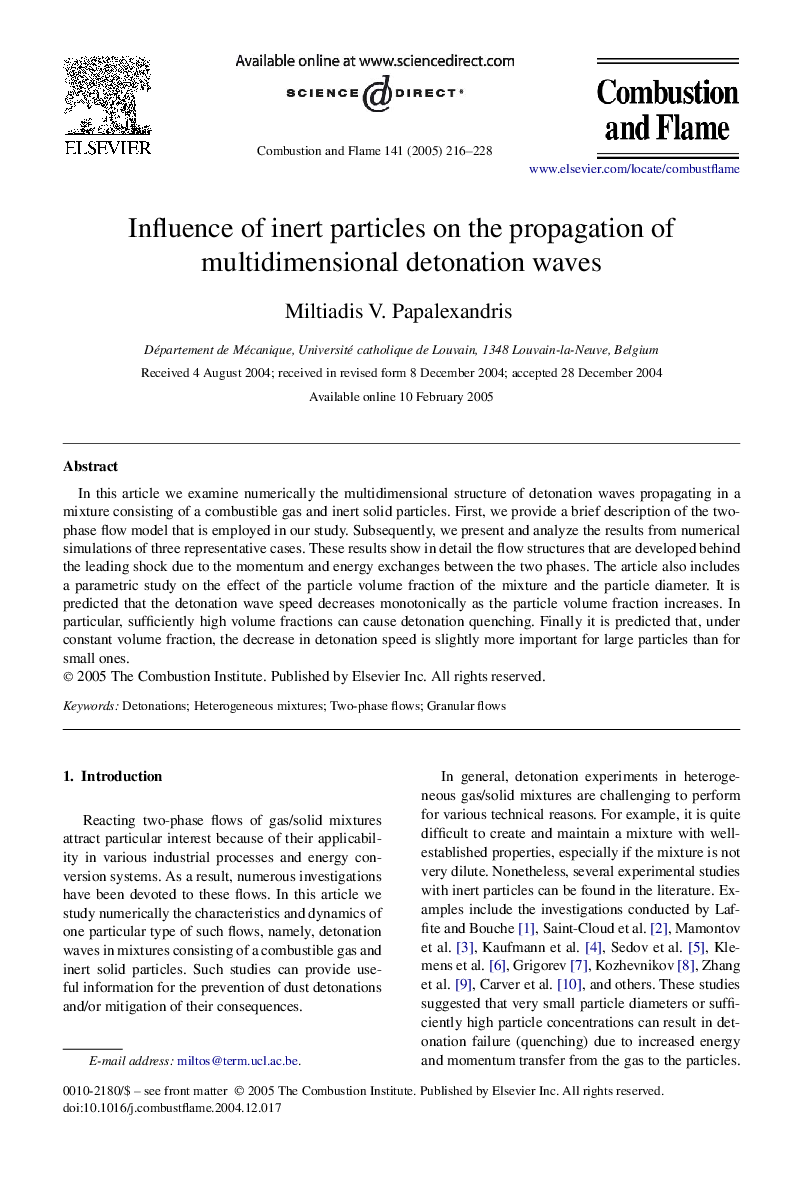| Article ID | Journal | Published Year | Pages | File Type |
|---|---|---|---|---|
| 10264473 | Combustion and Flame | 2005 | 13 Pages |
Abstract
In this article we examine numerically the multidimensional structure of detonation waves propagating in a mixture consisting of a combustible gas and inert solid particles. First, we provide a brief description of the two-phase flow model that is employed in our study. Subsequently, we present and analyze the results from numerical simulations of three representative cases. These results show in detail the flow structures that are developed behind the leading shock due to the momentum and energy exchanges between the two phases. The article also includes a parametric study on the effect of the particle volume fraction of the mixture and the particle diameter. It is predicted that the detonation wave speed decreases monotonically as the particle volume fraction increases. In particular, sufficiently high volume fractions can cause detonation quenching. Finally it is predicted that, under constant volume fraction, the decrease in detonation speed is slightly more important for large particles than for small ones.
Related Topics
Physical Sciences and Engineering
Chemical Engineering
Chemical Engineering (General)
Authors
Miltiadis V. Papalexandris,
